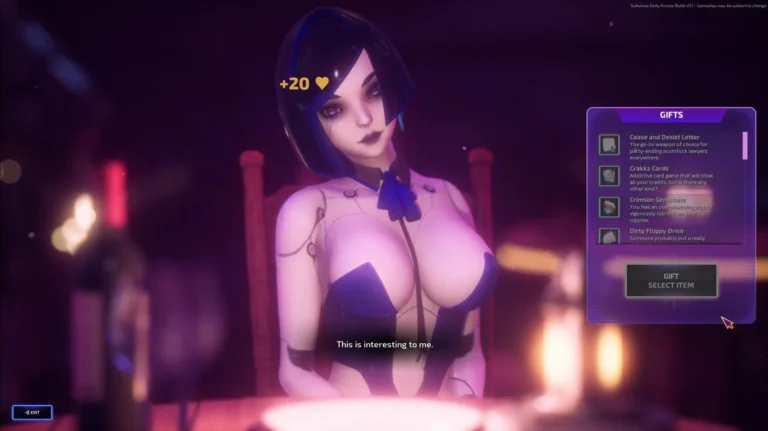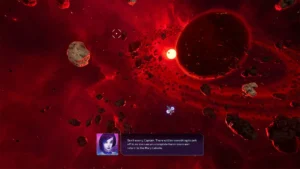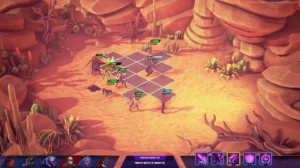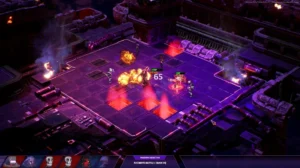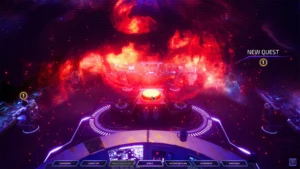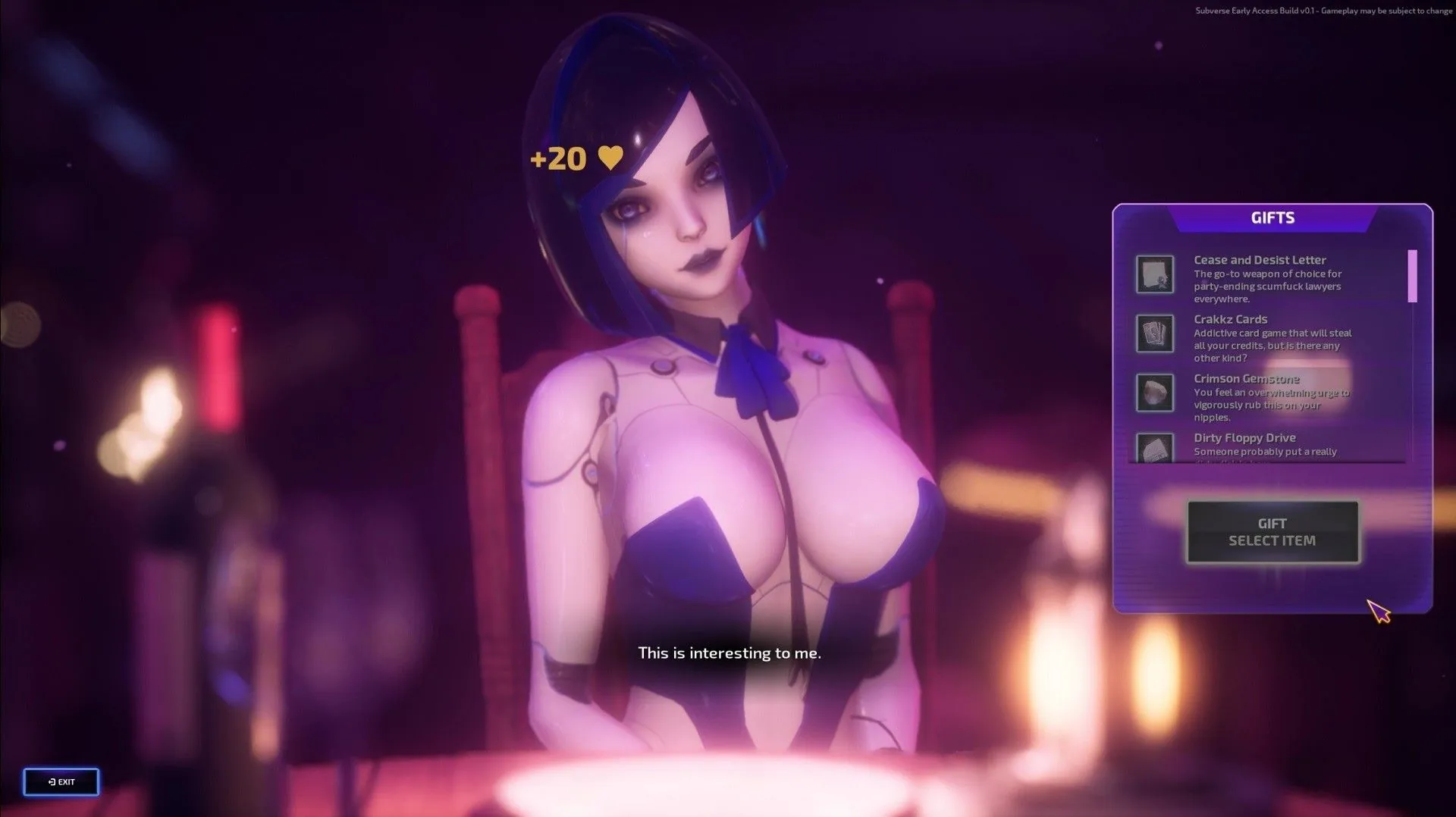
Subverse review
Explore Subverse’s unique blend of space combat, storytelling, and mature content
Subverse is a distinctive sci-fi tactical role-playing game that combines space shooter action with visual novel storytelling and mature themes. Developed by FOW Interactive, it immerses players in the Prodigium Galaxy, where they command a spaceship and build relationships with a diverse cast of characters. This article dives into what makes Subverse stand out, from its gameplay mechanics to its narrative and adult content, offering practical insights for both newcomers and fans.
Gameplay and Mechanics of Subverse
Ever felt like most sci-fi games just rehash the same old formulas? 😴 You know the drill: shoot some aliens, save the galaxy, maybe romance a crewmate with a dialogue wheel. I was totally fed up with it… until I found Subverse. This isn’t your average space opera; it’s a wild, uncensored ride that masterfully blends three distinct genres into one cohesive and incredibly satisfying experience. If you’re wondering how to play Subverse, the answer is simple: be ready to think, react, and get deeply invested in your crew. 🚀
The magic of Subverse gameplay lies in its refusal to be pigeonholed. One moment you’re commanding your squad on a tactical grid, and the next you’re blasting through waves of enemy fighters in a frenetic shoot ’em up sequence. It’s this constant switching of gears that keeps you on your toes and makes every play session feel fresh. I remember my first few hours, constantly being surprised by how well each mode complemented the others. It never feels jarring; instead, it feels like you’re experiencing different facets of a single, massive universe.
### What Makes Subverse’s Gameplay Unique? 🤔
What truly sets Subverse apart is its fearless hybrid approach. Imagine taking the strategic depth of XCOM, the white-knuckle action of a classic arcade shooter, and the rich, character-driven narrative of a visual novel, then throwing them all into a blender with a healthy dose of mature, unapologetic content. The result is a game that is far greater than the sum of its parts.
The core loop is brilliantly designed. You, as the captain of the spaceship Mary Celeste, navigate a star map, choosing missions that advance the overarching story. Each mission type feeds into a different gameplay mode, and success in one directly benefits the others. Winning a tactical battle might earn you credits to upgrade your ship for the shoot ’em up sections. Succeeding in a shoot ’em up sequence might unlock a new story beat that increases your crew’s loyalty. It’s a fantastically interconnected system.
To break it down clearly, here’s a comparison of the three core pillars of Subverse gameplay:
| Gameplay Mode | Primary Focus | Key Mechanics | Rewards |
|---|---|---|---|
| Tactical Combat | Strategic turn-based battles on a grid | Positioning, ability cooldowns, enemy weaknesses | Credits, Equipment, Progression Points |
| Shoot ’em Up | Reactive top-down space combat | Dodging, weapon patterns, power-up management | Ship Parts, Resources, Progression Points |
| Visual Novel | Story development and character interaction | Dialogue choices, hub exploration | Loyalty Points, Story Unlocks, Pandora Scenes |
This structure means there’s always something to do, and your playstyle can vary based on your mood. Feeling strategic? Tackle a few grid-based missions. Need some mindless action? Jump into the pilot’s seat for a shoot ’em up romp.
### How Tactical Combat and Space Shooters Blend 💥
Let’s dive deeper into the two main action modes, because nailing them is key to mastering how to play Subverse.
The Subverse tactical combat is where your brain gets a workout. You control a squad of your Waifus, each with a unique set of abilities, on a hex-based grid. It’s not just about moving and attacking; it’s about synergy. For instance, Lily is great for crowd control, while Ela can deliver massive single-target damage. My personal strategy involves using Lily to group enemies together and then having Ela clean them up with her powerful attacks. 🧠
Pro Tip: Always end your turns with your units in cover! The enemy AI is smart and will punish you for leaving a character exposed.
On the flip side, the Subverse shoot ’em up sections are a pure test of your reflexes. You directly control the Mary Celeste in classic bullet-hell style, weaving through intricate patterns of enemy fire. It’s fast, it’s chaotic, and it’s incredibly rewarding when you finally beat a tough boss. These sections are a brilliant way to break up the strategic pacing, getting your heart pumping as you desperately dodge lasers.
What’s genius is how these modes support each other. The credits and resources you earn from Subverse tactical combat missions allow you to purchase new weapons and upgrades for your ship, making the Subverse shoot ’em up segments easier. Conversely, completing shooter missions often yields parts that can unlock new abilities or stat boosts for your squad in the tactical mode. This symbiotic relationship is the engine of the game’s progression.
### Unlocking Content Through Missions and Loyalty ❤️
Alright, let’s talk about the heart of the game: your crew. This is where the Subverse experience becomes truly personal. Subverse waifu loyalty isn’t just a meter to fill; it’s the primary driver for Subverse character progression and unlocking the game’s most coveted content.
Each main character has a loyalty rank that you increase by:
* Completing their dedicated story missions.
* Choosing them for your squad in tactical combat.
* Finding and giving them gifts aboard the ship.
* Making specific dialogue choices during visual novel segments.
I made the mistake early on of focusing purely on one character, but I quickly learned that spreading the love is far more effective. Raising loyalty does more than just endear you to your crewmates; it directly makes them more powerful in combat. Higher loyalty tiers unlock new abilities and passive bonuses for that character, dramatically altering your strategies in Subverse tactical combat.
And then there are the Subverse mission rewards. Every mission you complete, regardless of type, grants you F.I.L.F. (Fuck, I Love Fiction) points. These points are your key to the Pandora system, the game’s vault of adult-themed scenes and content. Think of it as the ultimate end-game reward. The more you play and succeed, the more points you earn, and the more you can unlock. It’s a fantastic incentive system that had me chasing “just one more mission” late into the night. 🌌
Managing your ship, the Mary Celeste, is your home base for all of this. From the bridge, you can access the star map to choose missions, talk to your crew to build Subverse waifu loyalty, and use the Pandora system to spend your hard-earned F.I.L.F. points. The interface is intuitive, making it easy to jump between managing your relationships, upgrading your gear, and launching your next adventure.
So, my final piece of advice? Embrace all aspects of the game. Don’t just grind one mode. Dive into the stories, experiment with different team compositions in combat, and always talk to your crew after a big mission. The rich Subverse character progression and the satisfying loop of earning Subverse mission rewards are what transform this from a good game into an unforgettable journey. Your crew is counting on you, Captain. Now get out there and show the galaxy what you’re made of! ✨
Subverse offers a compelling mix of tactical combat, space shooter action, and narrative depth wrapped in a mature-themed sci-fi setting. Its unique gameplay mechanics and character-driven storylines provide an engaging experience for players seeking both strategy and storytelling. Whether you’re drawn by the tactical challenges or the rich character interactions, Subverse delivers a distinct gaming adventure. Dive in and explore the galaxy while building your crew and uncovering the secrets of Prodigium.
